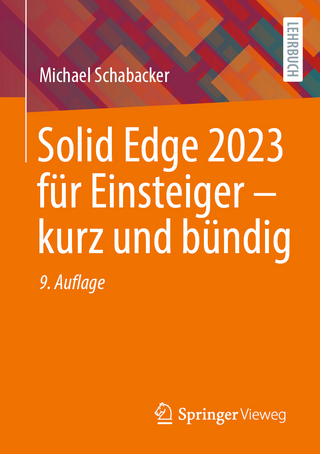
High Pressure Rheology for Quantitative Elastohydrodynamics
Elsevier Science Ltd (Verlag)
978-0-444-52243-6 (ISBN)
- Titel erscheint in neuer Auflage
- Artikel merken
Computational elastohydrodynamics, a part of tribology, has existed happily enough for about fifty years without the use of accurate models for the rheology of the liquids used as lubricants. For low molecular weight liquids, such as low viscosity mineral oils, it has been possible to calculate, with precision, the film thickness in a concentrated contact provided that the pressure and temperature are relatively low, even when the pressure variation of viscosity is not accurately modelled in detail. Other successes have been more qualitative in nature, using effective properties which come from the fitting of parameters used in calculations to experimental measurements of the contact behaviour, friction or film thickness. High Pressure Rheology for Quantitative Elastohydrodynamics is intended to provide a sufficiently accurate framework for the rheology of liquids at elevated pressure that it may be possible for computational elastohydrodynamics to discover the relationships between the behaviour of a lubricated concentrated contact and the measurable properties of the liquid lubricant. The required high-pressure measurement techniques are revealed in detail and data are presented for chemically well-defined liquids that may be used as quantitative reference materials.
Scott Bair received his Ph.D. in mechanical engineering and is currently a Principal Research Engineer and Director at the Center for High-Pressure Rheology at the Georgia Institute of Technology, USA. In 2009, he was the recipient of the International Award for the highest honor given by the Society of Tribologists and Lubrication Engineers. His main research areas are tribology, rheology, properties of liquids at high pressure, and machine design.
Chapter 1. An Introduction to Elastohydrodynamic Lubrication1.1 Lubrication1.2 Concentrated Contact Lubrication1.3 Full Elastohydrodynamic Lubrication1.4 Experimental Elastohydrodynamics1.5 ConclusionChapter 2. An Introduction to the Rheology of Polymeric Liquids2.1 Background2.2 The Newtonian Model2.3 Material Functions for Polymeric Liquids2.4 Rheological Models2.5 Time-Temperature-Pressure Superposition2.6 Liquid FailureChapter 3. General High-Pressure Experimental Techniques3.1 Background3.2 Pressure Containment3.3 Closures3.4 Feed-throughs3.5 Pressure Generation and Measurement3.6 Hydrostatic Media and Volume CompensationChapter 4. Compressibility and the Equation of State4.1 Background4.2 PVT Measurement Techniques and Results4.3 Empirical Equations of StateChapter 5. The Pressure and Temperature Dependence of the Low-Shear Viscosity5.1 Background5.2 High-Pressure Viscometers5.3 General Pressure-Viscosity Response and Results for Pure Organic Liquids and LubricantsChapter 6. Models for the Temperature and Pressure Dependence of the Low-Shear Viscosity6.1 Introduction6.2 Models for the Temperature-Viscosity Response6.3 Pressure Fragility and Empirical Models for High Pressure Behavior6.4 The Pressure-Viscosity Coefficient and Empirical Models for Low Pressure Behavior6.5 Empirical Models for Large Pressure Intervals6.6 Models Based on Free Volume Theory6.7 Generalized Temperature-Pressure-Viscosity Models6.8 Multi Component SystemsChapter 7. Measurement Techniques for the Shear Dependence of Viscosity at Elevated Pressure7.1 Introduction7.2 Phenomena Producing Behavior Similar to Shear-Thinning7.3 Rheometers for High PressureChapter 8. The Shear Dependence of Viscosity at Elevated Pressure8.1 Introduction8.2 Normal Stress Differences at Elevated Pressures8.3 The Origin of Non-Newtonian Behavior in Low-Molecular-Weight Liquids at Elevated Pressures8.4 Time-Temperature-Pressure Superposition8.5 The Competition between Thermal Softening and Shear-Thinning8.6 Multi Component Systems8.7 The Power-Law Exponent and the Second Newtonian ViscosityChapter 9. Glass Transition and Related Transitions in Liquids under Pressure 9.1 Measurements of Glass Transition at Elevated Pressure9.2 Measurements of Dielectric Transition at Elevated Pressure9.3 The Transitions as Isoviscous States 9.4 The Pressure Variation of Viscosity across the TransitionChapter 10. Shear Localization, Slip and the Limiting Stress10.1 Introduction10.2 Measurements of Rate Independent Shear Stress10.3 Flow Visualization of Shear Bands10.4 Mohr-Coulomb Failure Criterion 10.5 Change of Character of the Piezoviscous Navier-Stokes Equations10.6 Thermal Localization, Adiabatic Shear Bands10.7 Interfacial SlipChapter 11. The Reynolds Equation11.1 Background11.2 Reynolds Equations for Generalized Newtonian FluidsChapter 12. Applications to Elastohydrodynamics12.1 Introduction12.2 Film Thickness for Shear Thinning Liquids12.3 The Calculation of Traction from Material Properties
| Erscheint lt. Verlag | 6.3.2007 |
|---|---|
| Verlagsort | Oxford |
| Sprache | englisch |
| Gewicht | 580 g |
| Themenwelt | Technik ► Maschinenbau |
| ISBN-10 | 0-444-52243-3 / 0444522433 |
| ISBN-13 | 978-0-444-52243-6 / 9780444522436 |
| Zustand | Neuware |
| Haben Sie eine Frage zum Produkt? |
aus dem Bereich


